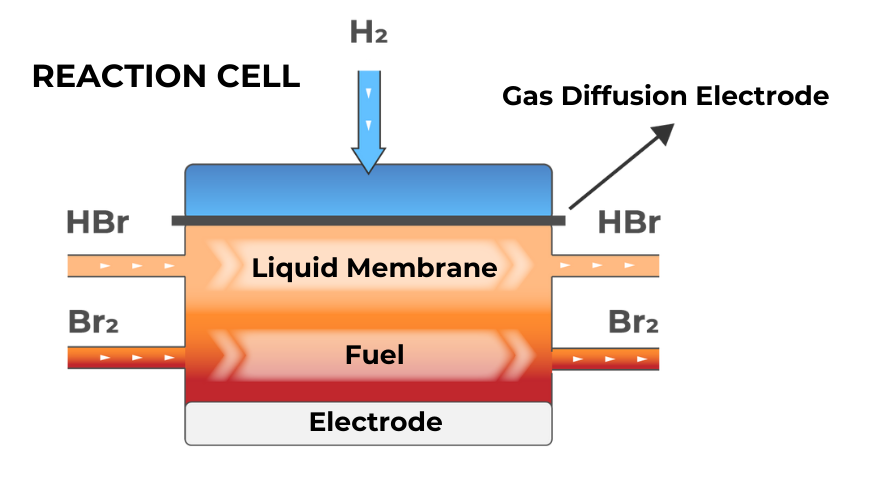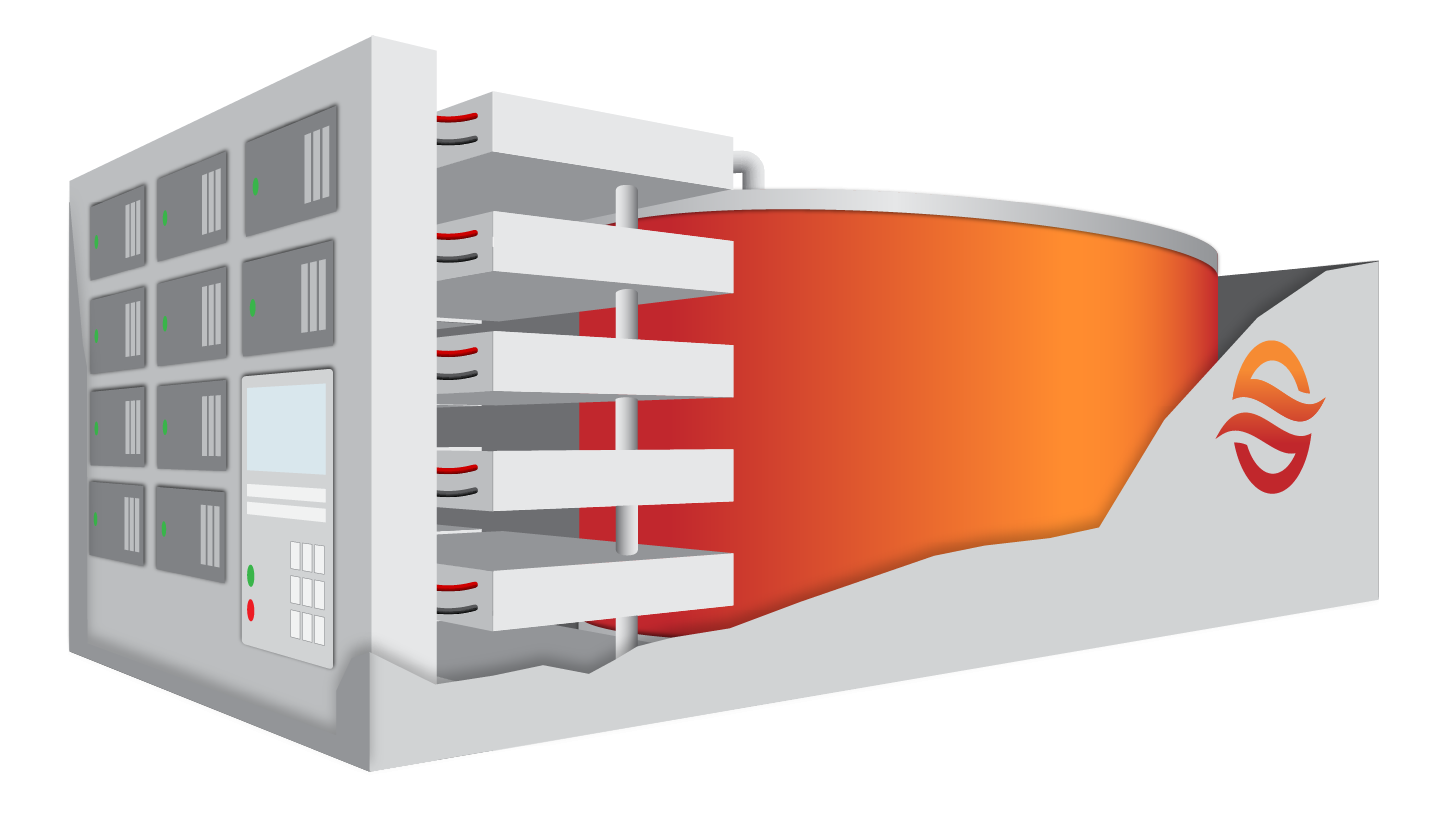SKIP TECH NOVEL LIQUID MEMBRANE
SKIP TECH NOVEL LIQUID MEMBRANE
The game changing feature of the Skip Tech System is the patent-pending liquid membrane that not only overcomes the most common obstacles to commercialization that were experienced by previous HBr flow-battery companies but offers several advantages over Skip Tech’s current competitors:
- Reduces system cost compared to other batteries and is long-lasting
- Utilizes more affordable chemicals that can store more energy than alternative batteries
- Boosts acidity tolerance and increases the battery’s energy capacity
Reaction Cell

POWER CELLS
POWER CELLS
The company’s patent-pending liquid membrane power cell is the engine of the Skip Technology energy storage system. Individual flow cells are where the chemical reactions associated with charging and discharging occur. These cells are combined into “stacks” of 10+ cells, depending on the desired output voltage. Unitized stacks are then connected in serial or parallel to reach customer-specified power requirements.
Our initial power targets for deployed systems are 2kW, 5kW and 10kW. These can occupy a variety of form factors. In time, we will scale these systems to 100’s of kW, fitting in typical container footprints. Facility-scale systems, repurposing existing infrastructure, could hit GW’s for a single large site.
